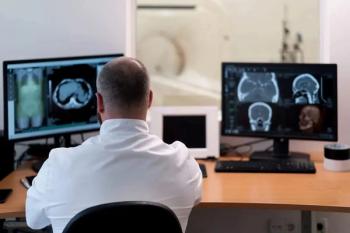
Too Much to Look At?
Is 2,000 images too many to avoid a malpractice suit?
It’s an interesting wrinkle, working in teleradiology: You get to see every conceivable way of doing things under the sun.
Prior to my taking the telerad-plunge in 2011, I could count with single digits the number of facilities in which I had seen diagnostic radiology work. The day I “went live” reading from home, I was receiving cases from dozens of facilities.
One of the numerous ways in which clients differ is how many images they throw at you. Site A might shoot you a CT with 30 axial images. Site B might do a case for exactly the same clinical history, but include that same 30-image series, another “thin-section” reconstruction from the same acquisition to the tune of hundreds of pix, and a couple of multiplanar reformats. If there’s contrast involved, they might also do MIP and/or 3D.
Recently, I’ve seen the same phenomenon, but cranked up to a new order of magnitude, with ultrasound. There are clients who, as a matter of routine, send intended “cine” sequences that I suppose are meant to compensate for the telerad not having been present in the sono room to watch real-time scanning. Thus, a simple DVT exam has run, and I do not exaggerate, nigh unto 2000 images. (And I think that was a unilateral study!)
Part of the issue is that computer-memory and bandwidth have become so cheap, and there is no disincentive for such behavior. Once upon a time, internet speeds were slower, and there was less room on digital media to store images. Or (dating myself again), a need to economize image-acquisition so as to use as few sheets of film as possible. Such pragmatic factors might curb willingness to save a gazillion images, even if the tech had no inherent self-restraint.
(Rather like what’s happened with photos on one’s cellphone, or personal computer. Remember when you had a roll of film in your camera, and had to exercise some judgment as to whether taking a picture was worth one of the frames? Or less memory on your cell/PC and actually needed to delete some pix if you wanted to have room for others? As opposed to now, where you unhesitatingly take numerous photos and never delete a single one.)
So, what’s the harm? Well, if you’re the radiologist receiving these needlessly bloated digital files, you are forced to choose between scrolling through it all (a not-inconsiderable investment of time and mouse work) versus skipping over the excess … and hoping that you aren’t missing anything important in the process. And if you choose the former, it’s not just a matter of sitting there while the images flit across your screen-you actually have to be looking at them all for the exercise to mean anything. Think you can remain intellectually engaged for that long?
Then, there’s the little matter of liability, and this isn’t just for the hapless rad who got the tech’s radiological approximation of War and Peace. Buried in the hundreds if not thousands of superfluous images, perhaps some would-be med-mal attorney (or his hired-gun “expert” witness) will find a pic with just the right artifact or other technical wrinkle. Blow that single image up to poster-size, circle the pixels supporting their claim that the rad “missed” this single image with key findings, and there’s Exhibit A which will keep the rad, his practice, the hospital, and the referring clinician entangled in the legal-machine for the next few months, if not years.
Newsletter
Stay at the forefront of radiology with the Diagnostic Imaging newsletter, delivering the latest news, clinical insights, and imaging advancements for today’s radiologists.




























